I started low-carb Paleo dieting in late 2005. I ate a lot of vegetables but no starches and hardly any fruit. In retrospect, I would call it a near zero-carb diet. At that time I was 12 years into a chronic illness that got a little worse each year and was quite mysterious to me. Adopting a low-carb diet brought immediate changes: it made what I would much later recognize as a chronic bacterial infection better (in parts of the body, not the brain) and made a chronic fungal infection worse.
Within about a year I had developed scurvy. It took me an embarrassingly long time to figure out what it was. By the time knew what it was, I had 3 cavities; had lost 25 pounds; had developed diverticulitis and an abdominal aorta that visibly swelled with every heartbeat; and had minor skin wounds – scrapes and scratches – that hadn’t healed in 6 months.
Developing scurvy was a surprise, because I was eating many vegetables plus taking a multivitamin containing 90 mg of vitamin C. I had never had any signs of vitamin C deficiency before adopting a low-carb diet.
Four grams a day of vitamin C for two months cured all the scurvy symptoms. It would be several more years before I figured out the infections, but this experience taught me the importance of micronutrition. The experience persuaded me that I needed to research diets and nutrition closely, and started us down the path of writing Perfect Health Diet.
Scurvy on a Ketogenic Diet
My experience is not unique. Here’s one case we mention in the book: the story of a young girl with epilepsy.
KM was a 9-year old girl … diagnosed with epilepsy at six months old. She started a ketogenic diet in October 2003, as her multiple antiepileptic drugs were proving to be less than effective; indeed she was having as many as 12 tonic seizures per day with prolonged periods of non-convulsive status epilepticus. After the diet was prescribed the seizure frequency reduced markedly and there were a number of long periods of time in which she had no seizures.
KM’s mother gave a history of her daughter having had bleeding gums since the beginning of September 2006; she described them as being very dark red, swollen and bleeding. In addition, she explained that her daughter had dry, crusted blood peri-orally. The family’s general dental practitioner had explained that this was probably caused by erupting teeth and instructed her to use 0.2% chlorhexidine gluconate gel and to continue her regular oral hygiene regimen; however this had no effect. About a month later the patient’s right arm became swollen. It was thought that she had sustained a fracture or a dislocation; however she was discharged from the local hospital’s fracture clinic because there was clinical improvement and radiographs showed no callus formation.
In early November KM inhaled a primary molar tooth while she was having her teeth cleaned (Fig. 1). This required an emergency bronchoscopy to retrieve it; at the same time the surgeons extracted her remaining primary teeth in order to avoid a recurrence of the problem….
At that time an appointment was made to attend a paediatric dentistry consultant clinic at the Leeds Dental Institute; however this was never kept as about three weeks after the extractions the patient was admitted to hospital with low grade fever, persistently bleeding gums, oedema of her hands and feet and a petechial rash on her legs. [1]
This girl was eating a typical amount of vitamin C: her dietary intake was calculated at 73 mg/day, well above the US RDA for 9-13 year olds of 45 mg/day. Yet her blood level was only 0.7 µmol/l. Scurvy is diagnosed at levels below 11 µmol/l.
The symptoms of scurvy are sufficiently insidious that it is easy to miss the diagnosis. In KM’s case, it happened that a “senior house officer” – a junior doctor in training – from India recognized the symptoms of scurvy. Otherwise, it might have never have occurred to the doctors to test her vitamin C level. [2]
What Is the Cause of Low-Carb Scurvy?
So what causes scurvy to develop on low-carb diets even with vitamin C intake well above the US RDA?
It seems to be a confluence of two factors:
- An infection or some other stress (e.g. injury, cancer) leads to the oxidation of extracellular vitamin C; and
- On a low-insulin or glutathione-deficiency-inducing diet, oxidized vitamin C is not recycled.
Infection and Vitamin C
The immune response to infections generates reactive oxygen species, which oxidize vitamin C. Oxidation removes a hydrogen atom from vitamin C, turning it into “dehydroascorbic acid,” or DHAA. If DHAA remains in the blood, it degrades with a half-life of 6 minutes. [3]
Infections can cause vitamin C deficiency on any diet. During the “acute phase response” to infection or injury, vitamin C often becomes deficient. Here is a nice paper in which French doctors surveyed their hospital patients for scurvy:
We determined serum ascorbic acid level (SAAL) and searched for clinical and biological signs of scurvy in 184 patients hospitalized during a 2-month period.
RESULTS: The prevalence of hypovitaminosis C (depletion: SAAL<5 mg/l or deficiency: SAAL<2 mg/l) was 47.3%. Some 16.9% of the patients had vitamin C deficiency. There was a strong association between hypovitaminosis C and the presence of an acute phase response (p=0.002). [4]
So half were at least depleted in vitamin C and 17% had outright deficiency, which if it persisted would produce scurvy.
We’ve previously written of how important it is to supplement with vitamin C during infections:
- “Fighting Viral Infections With Vitamin C at Bowel Tolerance,” https://perfecthealthdiet.com/?p=636.
- “New Zealand Man Left for Dead By Doctors, Cured by Vitamin C,” https://perfecthealthdiet.com/?p=439 and “Vitamin C vs Modern Medicine,” https://perfecthealthdiet.com/?p=619.
I might add here that in sepsis, an extremely dangerous inflammatory state brought on by bacterial infections, intravenous vitamin C reverses some of the worst symptoms. [5] If you have a loved one suffering from a dangerous infection, it might not be a bad idea to get them some vitamin C.
Insulin Dependence of Vitamin C Recycling
DHAA can be recycled back into vitamin C, but only inside cells.
In order to enter cells, DHAA needs to be transported by glucose transporters. GLUT1, GLUT3, and GLUT4 are the three human DHAA transporters; GLUT1 does most of the work. [6]
DHAA transport is crucial for brain vitamin C status. There is no direct transport of vitamin C into the brain, yet the brain is one of the most vitamin C-dependent tissues in the body. The brain relies entirely on GLUT1-mediated transport of DHAA from the blood for its vitamin C supply. Within the brain, DHAA is restored to vitamin C by glutathione.
Supplying DHAA to stroke victims (of the mouse persuasion) as late as 3 hours after the stroke can reduce the stroke-damaged volume by up to 95%:
DHA (250 mg/kg or 500 mg/kg) administered at 3 h postischemia reduced infarct volume by 6- to 9-fold, to only 5% with the highest DHA dose (P < 0.05). [7]
This is a fascinating reminder of the importance of vitamin C for wound repair and protection from injury.
Glucose transporters are activated by insulin. Thus, DHAA import into cells is increased by insulin, leading to more effective recycling of vitamin C [8]:

Insulin and IGF-1 promote recycling of DHAA into ascorbate. Source.
Confirming the role of insulin in promoting vitamin C recycling, Type I diabetics (who lack insulin) have lower blood levels of vitamin C, higher blood levels of DHAA, increased urinary loss of vitamin C metabolites, and greater need for dietary vitamin C. [9, 10]
Now we have a mechanism by which zero-carb diets reduce vitamin C recycling: by lowering insulin levels they inhibit the transport of DHAA into cells, preventing its recycling into vitamin C. Instead, DHAA is degraded and excreted. As a result, vitamin C is lost from the body.
Glutathione and Vitamin C Recycling
Once inside the cell, DHAA is recycled back to ascorbate, mainly by glutathione inside mitochondria:
Dehydroascorbate, the fully oxidized form of vitamin C, is reduced spontaneously by glutathione, as well as enzymatically in reactions using glutathione or NADPH. [11]
A GLUT1 transporter on the mitochondrial membrane is needed to bring DHAA into mitochondria, possibly squaring the effect of insulin on vitamin C recycling.
Since glutathione recycles vitamin C, glutathione deficiency is another possible cause of vitamin C deficiency.
Glutathione is recycled by the enzyme glutathione peroxidase, a selenium-containing enzyme whose abundance is sensitive to selenium status. One difficulty with zero-carb diets is that they seem to deplete selenium levels.
Selenium deficiency is a common side effect of ketogenic diets. Some epileptic children on ketogenic diets have died from selenium deficiency! [12]
So here we have a second mechanism contributing to the development of scurvy on a zero-carb diet. The diet produces a selenium deficiency, which produces a glutathione deficiency, which prevents DHAA from being recycled into vitamin C, which leads to DHAA degradation and permanent loss of vitamin C.
Conclusion
Zero-carb dieters are at high risk for vitamin C deficiency, glutathione deficiency, and selenium deficiency. Anyone on a zero-carb diet should remedy these by supplementation.
These deficiencies are exacerbated by chronically low insulin levels. Insulin helps recycle vitamin C, which supports glutathione status. Lack of insulin increases vitamin C degradation and loss.
The failure of the body to efficiently recycle vitamin C and maintain antioxidant stores on a zero-carb diet is evidence of an evolutionary maladaption to the zero-carb diet.
There was no reason why our ancestors should have become adapted to a zero-carb diet; after, all they’ve been eating starches for at least 2 million years. It seems a risky step to try to live this way.
Related Posts
Other posts in this series:
- Dangers of Zero-Carb Diets, I: Can There Be a Carbohydrate Deficiency? Nov 10, 2010.
- Dangers of Zero-Carb Diets, II: Mucus Deficiency and Gastrointestinal Cancers A Nov 15, 2010.
- Dangers of Zero-Carb Diets, IV: Kidney Stones Nov 23, 2010.
References
[1] Willmott NS, Bryan RA. Case report: Scurvy in an epileptic child on a ketogenic diet with oral complications. Eur Arch Paediatr Dent. 2008 Sep;9(3):148-52. http://pmid.us/18793598.
[2] Willmott NS, personal communication.
[3] “Dehydroascorbate,” Wikipedia, http://en.wikipedia.org/wiki/Dehydroascorbate.
[4] Fain O et al. Hypovitaminosis C in hospitalized patients. Eur J Intern Med. 2003 Nov;14(7):419-425. http://pmid.us/14614974.
[5] Tyml K et al. Delayed ascorbate bolus protects against maldistribution of microvascular blood flow in septic rat skeletal muscle. Crit Care Med. 2005 Aug;33(8):1823-8. http://pmid.us/16096461.
[6] Rivas CI et al. Vitamin C transporters. J Physiol Biochem. 2008 Dec;64(4):357-75. http://pmid.us/19391462.
[7] Huang J et al. Dehydroascorbic acid, a blood-brain barrier transportable form of vitamin C, mediates potent cerebroprotection in experimental stroke. Proc Natl Acad Sci U S A. 2001 Sep 25;98(20):11720-4. http://pmid.us/11573006.
[8] Qutob S et al. Insulin stimulates vitamin C recycling and ascorbate accumulation in osteoblastic cells. Endocrinology. 1998 Jan;139(1):51-6. http://pmid.us/9421397.
[9] Will JC, Byers T. Does diabetes mellitus increase the requirement for vitamin C? Nutr Rev. 1996 Jul;54(7):193-202. http://pmid.us/8918139.
[10] Seghieri G et al. Renal excretion of ascorbic acid in insulin dependent diabetes mellitus. Int J Vitam Nutr Res. 1994;64(2):119-24. http://pmid.us/7960490.
[11] Linster CL, Van Schaftingen E. Vitamin C. Biosynthesis, recycling and degradation in mammals. FEBS J. 2007 Jan;274(1):1-22. http://pmid.us/17222174.
[12] Bank IM et al. Sudden cardiac death in association with the ketogenic diet. Pediatr Neurol. 2008 Dec;39(6):429-31. http://pmid.us/19027591. (Hat tip Dr. Deans.)







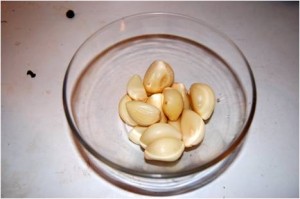

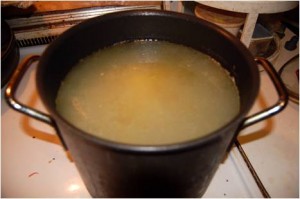
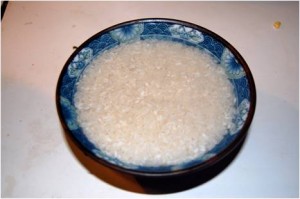
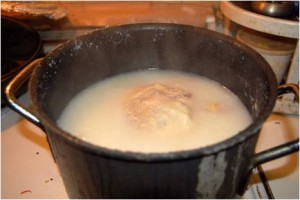
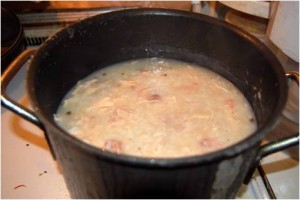
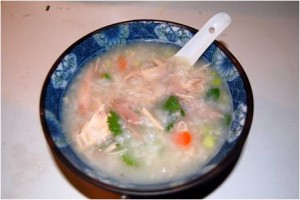
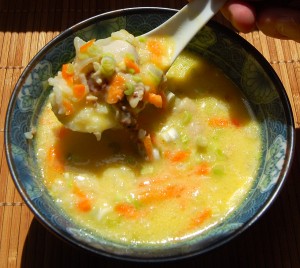




Recent Comments